This is a question I get all the time: Are marketing leaders actually becoming more data-savvy?
The truth is, we've come a long way.
Today’s CMOs and their teams are far more analytical and technical than five years ago. It’s not uncommon now to find marketers who can comfortably work with tracking tools, analytics dashboards, or even query databases. In some industries, like mobile apps or gaming, it's practically a requirement.
That shift didn’t happen by accident.
As marketing budgets started coming under more scrutiny, teams were pushed to prove their value. Performance marketing played a big role in this transformation. When platforms like Google and Meta offered granular tracking, it became easy to link spend to results. That kind of accountability became the new norm.
But here’s where things got lopsided.
Trackability isn’t everything
For a long time, marketers became hyper-focused on what was easy to measure: clicks, conversions, and cost-per-acquisition. Digital performance channels like Google Ads and Meta Ads stole all the attention.
But this obsession with trackable results created a false sense of precision and led many teams to neglect brand marketing entirely. This was a mistake.
Think about it.
Legendary brands like Nike and Apple didn’t rely on click-through rates or UTM tags in the ‘80s. They built emotional connections that paid off over decades. And yet, for a while, we acted like anything that couldn’t be measured in Google Analytics wasn’t worth doing.
Now, we’re finally finding our way back to balance.
Performance vs. brand is a false dichotomy
It surprises me that we still talk about “performance marketing” and “brand marketing” like they’re on opposite teams.
It suggests that a brand doesn’t have to perform, or that performance doesn't build brand. Neither is true.
All marketing should perform.
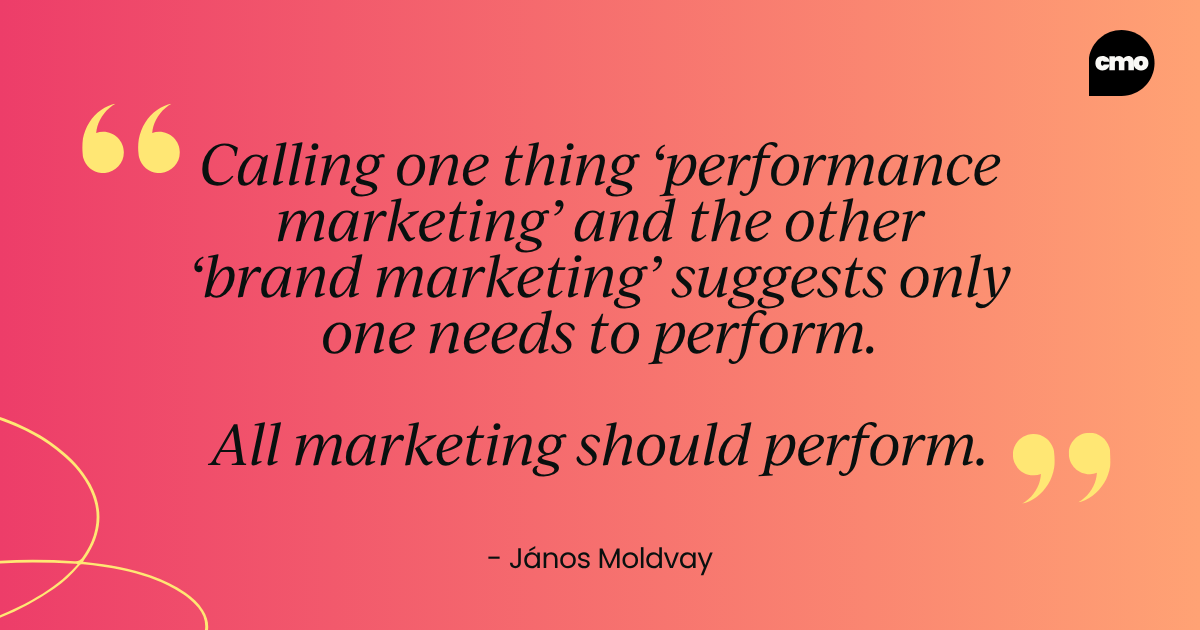
You’re not spending millions on a flashy campaign for fun, right? You’re trying to drive business value, whether that’s this quarter or next year. The only real distinction is timing: some activities drive short-term revenue, others create long-term equity.
But both matter.
There’s research out there, like the work of Les Binet and Peter Field, that suggests a 60/40 split between brand and performance is ideal for most brands. That ratio isn’t a rule, but the point is clear: you need both. And you need to understand how each contributes to the bigger picture.
How can we measure brand?
There’s a growing realization among CMOs that brand marketing is just as measurable as performance. It just requires a different toolkit.
Methodologies like Marketing Mix Modeling (MMM) and econometric models let us quantify the impact of brand campaigns, even when there’s no click or pixel to track.
What’s changed is that these models are now accessible to mid-market companies, not just global ones with massive budgets.
This shift is driven by necessity, too. With privacy regulations tightening and third-party cookies fading into oblivion, marketers are being forced to look beyond last-click attribution and rethink how they measure impact.
Understanding the impact of brand marketing
Measuring brand isn’t as easy as tracking a click, but it’s doable.
It starts with mapping all your marketing activities, not just the digital ones. That means bringing offline channels, OOH (out-of-home), sponsorships, even radio or print, into the mix.
At the same time, you need to account for external factors like seasonality, market conditions, or economic indicators (think: interest rates, inflation, or the volatility index if you're a financial services brand).
Once you’ve pulled together the right inputs, the next step is to measure their influence on brand health metrics. But here’s the tricky part – what exactly do we mean by “brand”?
Well, brand is one of those fuzzy concepts that everyone talks about, but is hard to define in a sentence. So, instead, we use proxies, signals that correlate with brand strength.
One of my favorite proxies is Share of Search, using tools like Google Trends. If more people are searching for your brand compared to competitors, that’s a pretty solid indicator of brand momentum. Studies show that Share of Search can predict future market share in many categories.
Other proxies include:
- Direct traffic (how often people go straight to your site)
- Social media mentions
- Brand tracker surveys
- NPS and customer sentiment data
Individually, each of these has its flaws. But when combined into a model, they paint a robust picture of brand equity.
Once you understand how your marketing activities affect brand, the next step is to connect brand equity to business outcomes:
- Model the impact of marketing on a brand, using techniques like marketing mix modeling.
- Model how brand impacts sales over time. This is where you capture the long-term effects of brand building.
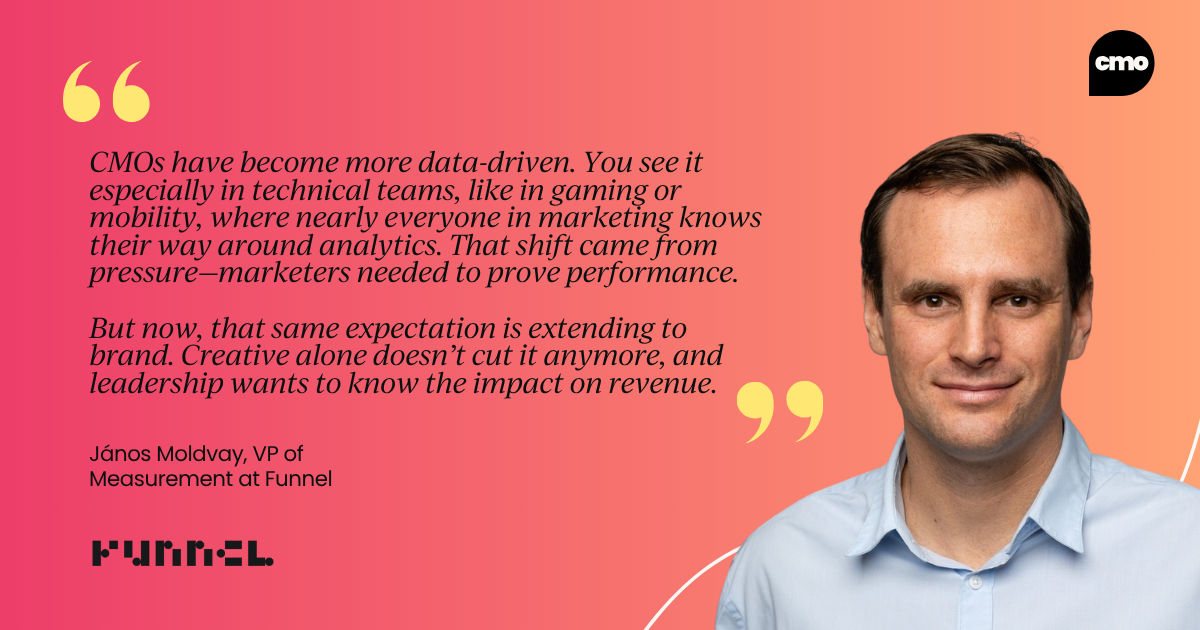
By chaining these models together, we can show how a spike in brand awareness today translates into increased sales or profitability in six months. That’s what gets the CFO to stop asking, “What’s the ROI of this brand campaign?” and start saying, “How do we do more of that?”
The problem with marketing measurement and attribution
If you’ve spent any time in marketing, you know how the story goes: attribution most of the time equals last click.
As my colleague Tim once put it: last-click is like McDonald’s. You know it’s bad for you, but sometimes, it’s just there, it’s convenient, and you use it. Just like fast food, last-click attribution is easy and everyone understands it. That’s why it sticks around.
Interestingly, nearly 80% of marketers still use last-click attribution in some form, but over half of them don’t actually want to. That says it all.
Better alternatives still aren’t as accessible or as easy to explain. But they exist, and they’re far more accurate.
The biggest flaw in last-click attribution
So, imagine a football club where only the striker gets paid, and everyone else plays for free. Sounds ridiculous, right? But that’s exactly how last-click treats your marketing funnel.
It ignores brand campaigns, impressions, offline touchpoints, discounts, and every other variable that contributes to a conversion but isn’t the final interaction. It’s narrow, it’s biased, and it actively devalues the channels that aren’t “clickable” even when they’re vital to long-term growth.
Sure, we’ve had alternatives like linear, first-click, or position-based models. But here’s the thing: they all suffer from the same fundamental problem. They only look at converting journeys.
That means we’re dealing with survivorship bias, judging success only by what worked, without ever examining what didn’t. That’s like rating a midfielder based only on the successful passes that he played, while ignoring all the missed passes. It's not a full picture.
What you really want is data-driven multi-touch attribution – a model that looks at all journeys, not just the ones that convert. It should analyze converting and non-converting paths alike and assess every touchpoint’s actual contribution to the outcome.
This is how you move from gut feeling to evidence-based marketing. And it’s where modern measurement starts to shine.
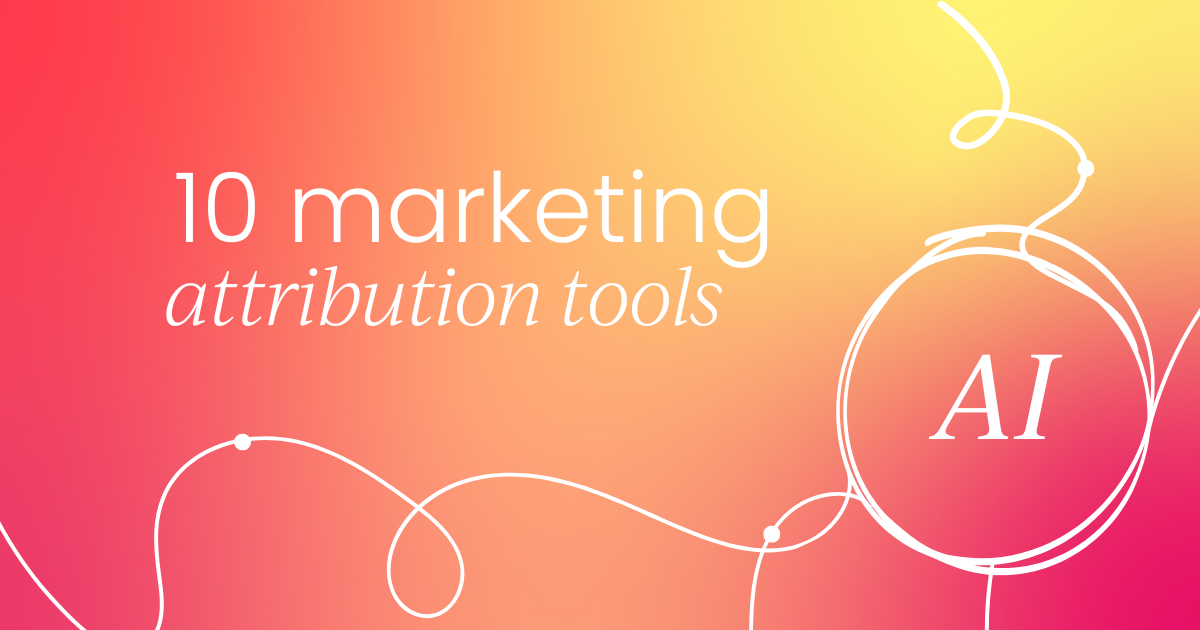
How to build a smarter data foundation
Attribution is only as good as the data behind it.
That’s where tools like Funnel come into play.
Before joining Funnel, I was a client. We’d already partnered since 2019 when I was building Adtriba, and we admired Funnel’s ability to pull together marketing data from hundreds of platforms quickly, accurately, and consistently.
This excited me because most marketers still live in Excel. They copy-paste performance data from Meta, Google Ads, LinkedIn, TikTok, and more, stitch it together manually, and then try to build reports for their CMO.
It’s inefficient, error-prone, and it wastes valuable time that should be spent on insights and strategy. Funnel changes all of that. It automates data collection, handles currency conversions across markets, normalizes metrics, and ensures a single source of truth.
And I bring this up because that’s the first step toward real marketing intelligence.
Data problems and how to spot them
If you’re new to marketing or still ramping up, a straightforward way to spot a data problem is this: when your platforms don’t add up.
Say Meta reports 120 conversions, Google reports 130, but your backend only shows 150 actual sales. That’s a problem. You’re dealing with double-counting and conflicting data, and you can’t rely on ad platforms to self-report objectively.
Then, there’s the issue of tracking limitations. Cookies are disappearing. Platforms like Instagram and TikTok don’t let you see individual ad impressions. And many users never click because they see, remember, and convert later.
That means you’re missing crucial data from upper-funnel brand campaigns, and if your attribution model relies solely on clicks, you’re blind to most of your brand impact.
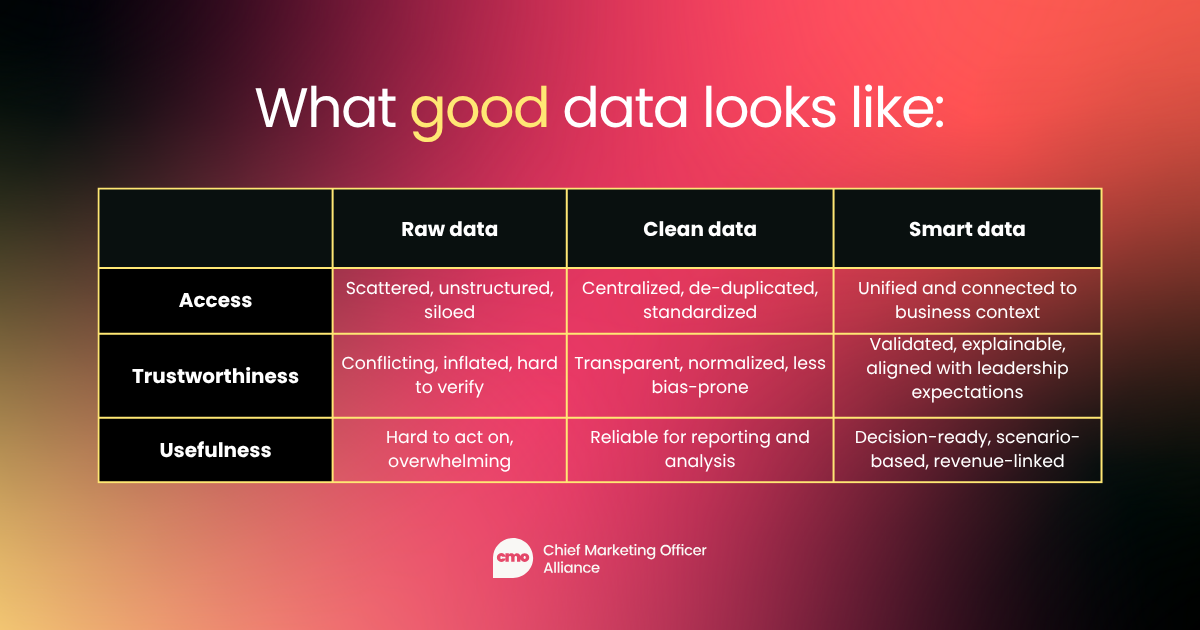
Data quality is everything
Clean, structured, and consistent data is non-negotiable if you want to build trust in your insights. That means:
- Converting currencies across global campaigns
- De-duplicating conversions across platforms
- Normalizing metrics for proper comparisons
- Understanding what your data can’t tell you
Even the best tracking setup won’t capture every touchpoint. That’s okay, but you need to know the limits and work around them with smart methodologies.
Consider triangulation
So, where’s marketing measurement heading?
Triangulation.
Rather than relying on a single method (which always has limitations), triangulation combines the strengths of three core methodologies:
- Marketing Mix Modeling (MMM): Great for big-picture insights and offline/non-trackable channels.
- Data-Driven Multi-Touch Attribution (MTA): Granular, conversion-path-level understanding.
- Incrementality Testing (e.g., Geo-Lift Experiments): Causal validation through real-world testing.
However, bear in mind each has its pros and cons:
- MMM struggles with granularity, robustness, and needs a lot of historic data (ideally at least 2 years).
- MTA is vulnerable to signal loss and privacy regulation.
- Experiments provide rock-solid causality, but take time and can sacrifice revenue during test periods.
When combined, they cover each other's blind spots.
What smart marketers are doing differently
Here’s what we’re seeing from top-performing marketing teams:
- They build integrated data ecosystems that include online, offline, brand, and performance metrics.
- They use statistical modeling to uncover the real drivers of growth, not just the last-click.
- They create cross-functional teams where creatives, analysts, and strategists actually talk to each other.
- They focus on incrementality: what really changed because of their actions, not just what happened.
And, most importantly, they invest in long-term brand building while staying agile with performance campaigns.

How to build trust in marketing data
One challenge many CMOs face is presenting marketing data to the CFO or CEO, only to be met with skepticism. I get it. Finance teams need bulletproof evidence, not hand-wavy metrics.
In my experience, this is what works:
Transparency. Be clear about data sources, methodologies, and assumptions. Educate the audience. We’ve built academies and courses at Funnel to help with this.
Validation. Use experiments to back up models. CFOs understand A/B tests. Show them real-world proof of impact.
Speak their language. Marketing metrics like ROAS and CPA aren’t so different from financial ones like IRR. At the end of the day, we’re all trying to optimize return on investment.
This transition won’t happen overnight. But as CMOs become more technical and as data teams grow more embedded in marketing, the gap will close.
Treat marketing as a revenue-driven department
It’s time we killed the outdated perception of marketing as a “cost center”. In reality, marketing is fast becoming one of the most performance-driven teams in the business.
Today’s top marketing teams:
- Think in terms of margin, ROI, and revenue
- Fight for budget the same way a sales team does
- Measure impact, not just output
- Push for efficiency and scale, even in creative and brand campaigns
In many companies we work with, marketing is already seen as a profit center. That trend is accelerating, especially in this tougher economic climate, where every dollar must prove its worth.
Now it’s about finding the optimal balance between reach and efficiency, and defending that budget with hard numbers.
Final thoughts
If there’s one thing I’ve learned after years working in marketing analytics, it’s this: measurement doesn’t need to be perfect, but it does need to be honest, consistent, and useful.
Most teams I talk to aren’t struggling because they don’t have enough data. They’re struggling because they don’t trust the data they have, or they’re relying on outdated models that oversimplify a complex customer journey.
Here’s what I’d keep in mind:
- Last-click attribution is convenient, but misleading. It rewards the final touchpoint and ignores everything else.
- Static models aren’t the answer either. They still only show you part of the picture.
- Better measurement starts with better data. Clean, structured, unified data is the foundation.
- Triangulation is the future. Combine attribution, MMM, and experiments to get a full view.
- CMOs and CFOs are closer than we think. When marketing can talk in terms of return, efficiency, and long-term impact, it stops being seen as a cost center and starts being seen as a growth engine.
- And finally, brand and performance aren’t enemies. They’re just different levers in the same system. Every channel and campaign should be held accountable to some form of performance, whether short-term or long-term.
Get your copy of the CMO's Guide to Measurement to learn how to combine multiple data sources for a complete view of marketing performance, how AI-powered attribution will save you time, and so much more.
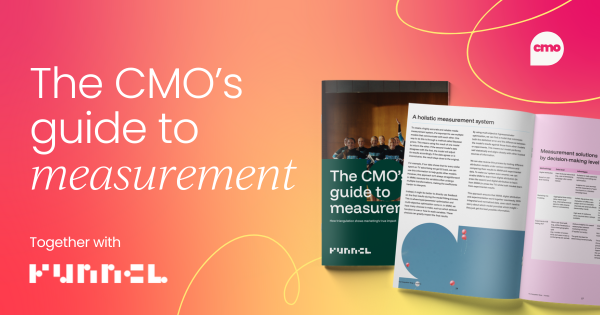






.png)



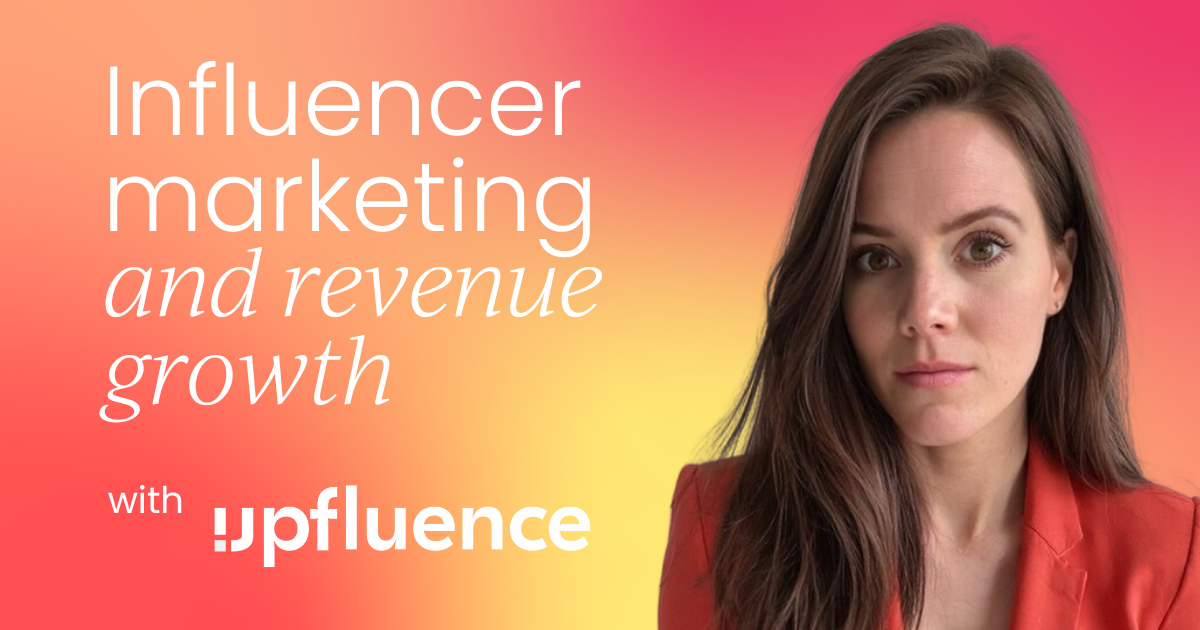





 Follow us on LinkedIn
Follow us on LinkedIn







